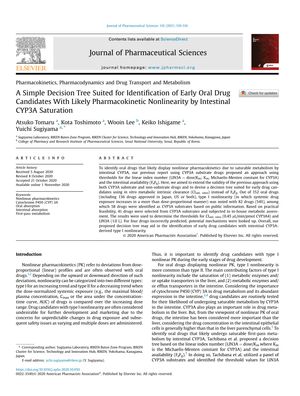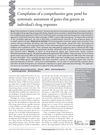A Simple Decision Tree for Identifying Early Oral Drug Candidates With Likely Pharmacokinetic Nonlinearity by Intestinal CYP3A Saturation
November 2020
in “
Journal of Pharmaceutical Sciences
”

TLDR The decision tree can predict drug absorption issues with good accuracy but needs more validation and adjustments for other factors.
The study developed a decision tree to predict type I pharmacokinetic nonlinearity in early oral drug candidates due to intestinal CYP3A saturation. It analyzed 152 oral drugs, of which 82 (54%) exhibited type I nonlinearity and 58 were CYP3A substrates. A subset of 41 drugs underwent in-house metabolic assessment, leading to the establishment of threshold values for the linear index number (LIN3A) and in vitro metabolic intrinsic clearance (CLint, vitro) at 1.0 L and 0.45 µL/min/pmol CYP3A4, respectively. The decision tree accurately predicted nonlinearity in 27 out of 34 drugs, but four drugs, including voriconazole and finasteride, were incorrectly predicted due to other mechanisms like saturable metabolism by CYP2C19 and target-mediated drug disposition (TMDD). The study concluded that the decision tree could predict type I nonlinearity with improved accuracy, but acknowledged the need for further validation and consideration of additional mechanisms affecting pharmacokinetics.





